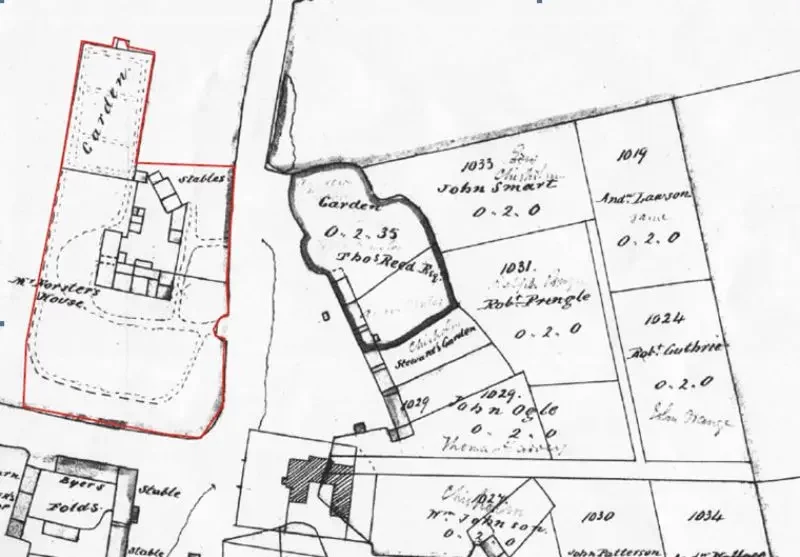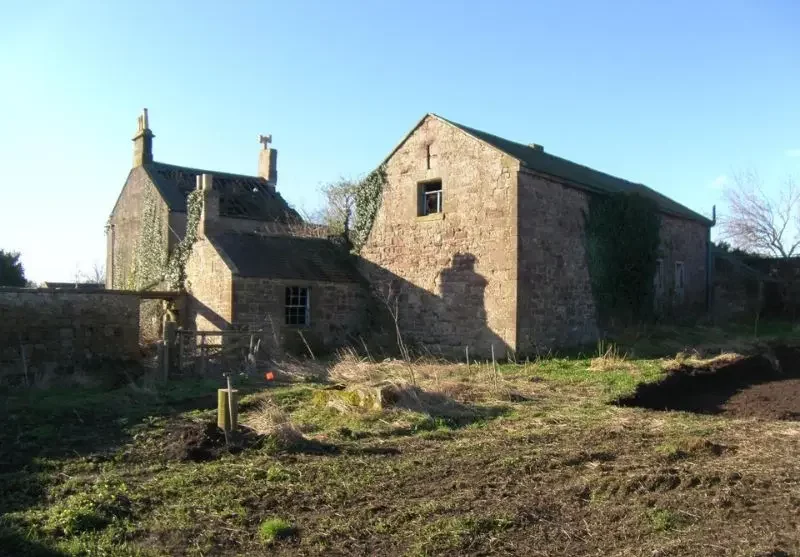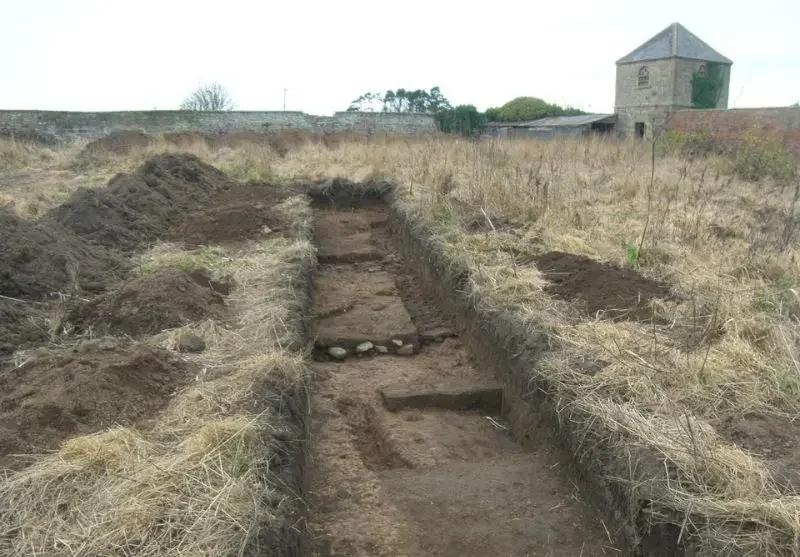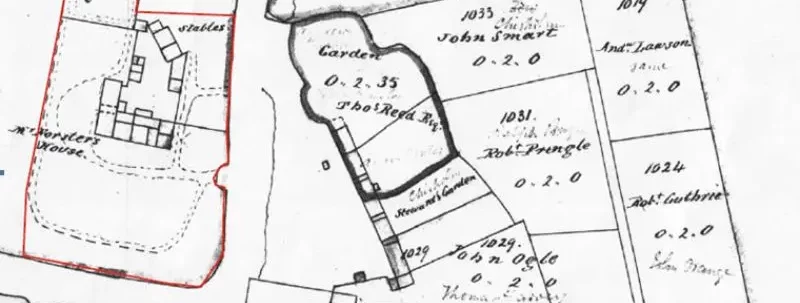-
Clients
Holiday Property Bond Ltd
The results of a long-running project associated with the transformation of a former Grade II listed Georgian hall into a holiday-let complex at Lucker, Northumberland, have now been published.
The full site report is available on the Archaeological Data Service (ADS), and a paper about the medieval pottery kiln and its products is presented in the peer-reviewed journal of the Medieval Pottery Research Group, Medieval Ceramics.

Lucker Hall had been heavily damaged during a tragic fire in 1987, and as a result, lost its protected status. In the early part of the 21st century, Ecus Archaeology undertook archaeological works on behalf of Holiday Property Bond (HPB); the company carried out a historic building survey in 2005, and evaluation by trial-trenching in 2013. At the time of the works, the former hall complex was an overgrown ruin. The investigations indicated that parts of the hall were much older than first believed and that well-preserved medieval and later deposits were present in the grounds.
Based on these results, archaeological excavation was undertaken in 2014. The earliest phase encountered included a medieval updraft pottery kiln and its associated clay quarries, pits, surfaces and a structure. In addition, a possible medieval road surface was uncovered, along with other metalled surfaces, a few ditches and areas of ridge-and-furrow ploughing. The use of the kiln was radiocarbon dated to sometime between AD1280 and AD1395; however, production may have been more extensive and longer-lived. The medieval features contained 14.7kg of medieval pottery, most of which were products of the kiln site. An iron sickle and knife were also recovered from medieval features to the south-east that were probably not associated with the kiln.

The site comprised nearly a quarter of the area of the present-day village, and developments during the 17th, 18th and 19th centuries were also recorded during the excavation. A row of six houses (visible on historic mapping), along with part of the cobbled village road, remnants of yards, walls and property boundaries overlay the medieval remains. Sometime in the 18th century the hall expanded incorporating the six properties and part of the former village road. Elements of the 18th- and 19th-century hall complex recorded during the excavation included a cobbled yard and stables. Interestingly, episodes of infilling and landscaping within the excavated area could be linked to historic developments within the hall complex, including the rebuilding of the stable block between 1848 and 1850.
The 17th- to 19th-century features and deposits contained a large assemblage of artefacts including 1302 sherds of post-medieval pottery (16.4 kg; maximum of 1058 vessels). Brick and tile fragments were recovered as were numerous fragments from glass vessels, animal bones, small amounts of industrial waste and charred plants. Within the glass finds was a fragment from a bottle embossed with ‘THE ONLY GENUINE DAY SON AND HEWITTS GASEOUS FLUID LONDON’. ‘Day, Son and Hewitts’ was established in 1833 and is still trading today, and the fluid in question was used as a cure for colic and gripes in horses.

Another fascinating glimpse into the past of the hall was provided within the animal bone assemblage. The partial skeletons of an infant piglet, two puppies, three cats, three rats, five juvenile domestic fowl and a duck were recovered from within the deposits that infilled the early stables.
Full analysis of the medieval material (and indeed the substantial post-medieval assemblages) was beyond the scope of the project; therefore, the site report and the published article are just a starting point for future academic research. The recovered artefacts (which are soon to be deposited with The Great North Museum: Hancock) represent an important dataset for understanding regional developments in pottery production, agriculture and society during the 12th to 19th centuries.
References
Robinson, G. and Middleton, P. (2016) Lucker Hall, Lucker, Northumberland: archaeological report. Northern Archaeological Associates unpublished report no. 16/66. Available at: https://doi.org/10.5284/1082606
Cumberpatch, C. and Robinson, G. (2021) A medieval kiln and associated features at Lucker Hall, Northumberland. Medieval Ceramics 40, 39–54.

